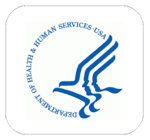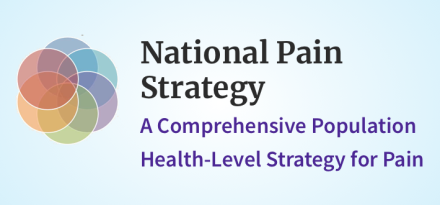About the IPRCC
The Interagency Pain Research Coordinating Committee (IPRCC) is a Federal advisory committee created by the Department of Health and Human Services to enhance pain research efforts and promote collaboration across the government, with the ultimate goals of advancing the fundamental understanding of pain and improving pain-related treatment strategies.
On behalf of HHS, the NIH established the IPRCC to coordinate all pain research efforts within HHS and across other Federal Agencies. The Committee is composed of seven Federal members and twelve non-Federal members, six drawn from the scientific and medical communities and six members of the public and stakeholder groups. The Department of Health and Human Services Secretary will review the Necessity of the Committee at least once every two years.
IPRCC Members
Helene Langevin, MD, CM
Director
National Center for Complementary and Integrative Health
Appointment end: 07/31/2025
Dr. Langevin is Director of the National Center for Complementary and Integrative Health (NCCIH). Read Dr. Langevin's bio.
Federal Members
Elisabeth Kato, MD, MRP
Medical Officer at the Center for Evidence and Practice Improvement
Agency for Healthcare Research and Quality
Dr. Elisabeth Kato is a Medical Officer at the Center for Evidence and Practice Improvement at the Agency for Healthcare Research and Quality (AHRQ). As Medical Officer, she coordinates opioid-related activities across AHRQ, including chairing opioid workgroup meetings, internal and external reporting, and representing AHRQ on intergovernmental working groups and conferences.
Walter J. Koroshetz, MD
Director
National Institute of Neurological Disorders and Stroke
Bethesda, MD
Dr. Koroshetz is the director of NINDS. Read Dr. Koroshetz's bio.
Christopher Spevak, MD, MPH, JD
Medical Officer, Walter Reed National Military Center
Defense Health Agency, Research & Engineering
Department of Defense
Dr. Christopher Spevak, an anesthesiologist and pain physician at Walter Reed National Military Medical Center. He is the Director of the National Capital Region Pain Initiative, Director of the National Capital Region Safety Initiative, Director of the Wounded Warrior Pain Care Initiative, and Program Director for the Pain Management Fellowship.
Friedhelm Sandbrink, MD
Director, Pain Management Program
Washington VA Medical Center Department of Neurology
Dr. Sandbrink is the National Program Director for Pain Management for the Veterans Health Administration (VHA) and leads the comprehensive pain program at the Washington D.C. VA Medical Center. He is a clinical associate professor at the Uniformed Services University in Bethesda, Maryland, and assistant clinical professor at George Washington University. He participated in the VA/Department of Defense Clinical Practice Guidelines Workgroups for Opioid Therapy for Chronic Pain and for Diagnosis and Treatment of Low Back Pain, both in 2017, and in the Pain Management Best Practices Inter-Agency Task Force established by the Department of Health and Human Services. Dr. Sandbrink's interests include collaborative pain care, interdisciplinary pain management, opioid safety, neuropathic pain, and the study of neuroplasticity and placebo/nocebo effects related to pain. He received an M.D. from Hannover Medical School.
Scientific Members
Tamara Baker, PhD
Professor
University of North Carolina at Chapel Hill
Dr. Tamara A. Baker is a Professor in the Department of Psychiatry at the University of North Carolina at Chapel Hill. She is an appointed member of the US Department of Veterans Affairs’ Geriatric and Gerontology Advisory Committee, a member of the National Institutes of Health’s Interagency Pain Coordinating Committee, and a member of the Helping to End Addiction Long-Term (HEAL) Pain Strategic Plan’s Executive Committee. Dr. Baker is a member of Taylor & Francis’ editorial Advisory Board and Editor-in-Chief of Ethnicity & Health. She is formerly the Gerontological Society of America’s (GSA) Secretary and has served as Chair of the Committee on Minority Issues in Gerontology and Chair of the Behavioral and Social Sciences (BSS) section. She is a GSA Fellow, founder and co-convener of GSA’s Historically Black Colleges and Universities (HBCU) Collaborative Interest Group, and appointed GSA Board of Governor’s Vice President (2025) and GSA President (2026). Her background in Gerontology, Psychology, and Biobehavioral Health has evolved into an active research agenda that focuses on understanding the behavioral and psychosocial predictors and outcomes of chronic pain and pain and symptom management among older adults from historically marginalized populations. She also examines health disparities and inequities in pain management, and access and availability to pain management resources among older adults. Broadly, her research includes health disparities and health equity, cultural diversity/sensitivity, and social determinants of health. Dr. Baker’s current research focuses on the pain experience in older Black males, an understudied population in pain research.
Scott Fishman, MD
Professor
University of California, Davis
Renee Manworren, PhD
Chair in Nursing Research
Ann & Robert H. Lurie Children’s Hospital of Chicago
Public Members
Paul Arnstein PhD, RN
Past president
American Society for Pain Management Nursing
Monica Mallampalli, PhD
Chief Executive Officer
Alliance of Sleep Apnea Partners
Kate Nicholson, JD
President and Founder
The National Pain Advocacy Center
Ex-Officio Members
Nora D. Volkow, MD
Director
National Institute on Drug Abuse, National Institutes of Health
Bethesda, MD
Shannon N. Zenk, PhD, MPH, RN, FAAN
Director
National Institute of Nursing Research
IPRCC Agencies
The Interagency Pain Research Coordinating Committee (IPRCC) has been established in accordance with the Affordable Care Act (ACA) (Public Law 111-148). The primary goal of agency membership on the IPRCC is to facilitate the sharing of information related to pain research, pain policy and funding opportunities.
This IPRCC webpage serves as a central hub, providing access to pain-related resources from each participating agency, including their websites, pain policies, research initiatives and available funding opportunities.
The following federal agencies are represented on the Committee:
Meetings
Workgroups
The IPRCC has several workgroups focused on specific areas relevant to pain research.
Workforce and Provider Training
This workgroup seeks to enhance the capacity and skills of the workforce and providers through training initiatives that support the effective integration and application of research findings into practice.
Resilience and Prevention in Chronic Pain
This workgroup seeks to explore and promote strategies for building resilience and preventing chronic pain through research, education, and the dissemination of evidence based practices.
Implementation Science
The implementation science workgroup takes steps to advance the understanding and application of implementation science research to improve adoption, integration, and sustainability of evidence based practices.
Communication and Dissemination
The communication and dissemination workgroup works to enhance research efforts and promote collaboration across the government, with the ultimate goals of advancing the fundamental understanding of pain and improving pain-related treatment strategies.
Health Care Act Provisions
The Affordable Care Act (ACA) (Public Law 111-148) provisions related to the Interagency Pain Research Coordinating Committee are as follows:
- ESTABLISHMENT
The Secretary shall establish not later than 1 year after the date of the enactment of this section and as necessary maintain a committee, to be known as the Interagency Pain Research Coordinating Committee (in this section referred to as the 'Committee'), to coordinate all efforts within the Department of Health and Human Services and other Federal agencies that relate to pain research.
- MEMBERSHIP
(1) In general --The Committee shall be composed of the following voting members: (i) Not more than 7 voting Federal representatives appoint by the Secretary from agencies that conduct pain care research and treatment. (ii) 12 additional voting members appointed under subparagraph (B).
(2) Additional members -- The Committee shall include additional voting members appointed by the Secretary as follows: (i) 6 non-Federal members shall be appointed from among scientists, physicians, and other health professionals. (ii) 6 members shall be appointed from members of the general public, who are representatives of leading research, advocacy, and service organizations for individuals with pain- related conditions.
(3) Nonvoting members -- The Committee shall include such nonvoting members as the Secretary determines to be appropriate.
- CHAIRPERSON
The voting members of the Committee shall select a chairperson from among such members. The selection of a chairperson shall be subject to the approval of the Director of NIH.
- MEETINGS
The Committee shall meet at the call of the chairperson of the Committee or upon the request of the Director of NIH, but in no case less often than once each year.
- DUTIES
As specified in Public Law 111-148 (“Patient Protection and Affordable Care Act”) and amended in H.R. 6, (“Support for Patients and Communities Act”) the Committee will:
The Committee shall-
(a) develop a summary of advances in pain care research supported or conducted by the Federal agencies relevant to the diagnosis, prevention, treatment, and management of pain and diseases and disorders associated with pain, including information on best practices for the utilization of non-pharmacologic treatments, non-addictive medical products, and other drugs or devices approved or cleared by the Food and Drug Administration;
(b) identify critical gaps in basic and clinical research on-- the symptoms and causes of pain, including the identification of relevant biomarkers and screening models and the epidemiology of acute and chronic pain;
- the diagnosis, prevention, treatment, and management of acute and chronic pain, including with respect to non-pharmacologic treatments, non-addictive medical products, and other drugs or devices approved or cleared by the Food and Drug Administration; and
- risk factors for, and early warning signs of, substance use disorders in populations with acute and chronic pain;
(c) make recommendations to the Director of NIH-
- to ensure that the activities of the National Institutes of Health and other Federal agencies are free of unnecessary duplication of effort;
- on how best to disseminate information on pain care and epidemiological data related to acute and chronic pain; and
- on how to expand partnerships between public entities and private entities to expand collaborative, cross-cutting research
- REVIEW
The Secretary shall review the necessity of the Committee at least once every 2 years.
Related Topics









